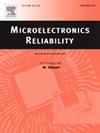Fast reverse engineering of chips using lasers, Focused Ion Beams, and confocal and scanning electron microscopy
IF 1.6
4区 工程技术
Q3 ENGINEERING, ELECTRICAL & ELECTRONIC
引用次数: 0
Abstract
This study presents novel methodologies for the reverse engineering and failure analysis of semiconductor devices, focusing on overcoming the limitations of traditional Focused Ion Beam (FIB) techniques. Central to our approach are two innovative methods: high-precision volumetric imaging via 3D reconstruction from laser-delayered surface profiles and a hybrid delayering technique combining ultrashort pulsed laser removal with FIB polishing. These methods address the challenges of slow delayering processes and uneven layer exposure by enabling faster material removal, minimizing thermal damage, and ensuring precise surface preparation for imaging. The effectiveness of these approaches is demonstrated through detailed imaging of embedded chip circuitry in two advanced technology chips. Our findings highlight significant advancements in the speed, accuracy, and efficiency of semiconductor device analysis, promising to streamline reverse engineering efforts and enhance failure analysis processes.
快速逆向工程芯片使用激光,聚焦离子束,共聚焦和扫描电子显微镜
本研究提出了半导体器件逆向工程和失效分析的新方法,重点是克服传统聚焦离子束(FIB)技术的局限性。我们的方法的核心是两种创新方法:通过激光延迟表面轮廓的3D重建进行高精度体积成像,以及将超短脉冲激光去除与FIB抛光相结合的混合延迟技术。这些方法通过实现更快的材料去除,最大限度地减少热损伤,并确保成像的精确表面制备,解决了缓慢的分层过程和不均匀的层暴露的挑战。通过两种先进技术芯片的嵌入式芯片电路的详细成像,证明了这些方法的有效性。我们的研究结果突出了半导体器件分析在速度、准确性和效率方面的重大进步,有望简化逆向工程工作并增强失效分析过程。
本文章由计算机程序翻译,如有差异,请以英文原文为准。
求助全文
约1分钟内获得全文
求助全文
来源期刊

Microelectronics Reliability
工程技术-工程:电子与电气
CiteScore
3.30
自引率
12.50%
发文量
342
审稿时长
68 days
期刊介绍:
Microelectronics Reliability, is dedicated to disseminating the latest research results and related information on the reliability of microelectronic devices, circuits and systems, from materials, process and manufacturing, to design, testing and operation. The coverage of the journal includes the following topics: measurement, understanding and analysis; evaluation and prediction; modelling and simulation; methodologies and mitigation. Papers which combine reliability with other important areas of microelectronics engineering, such as design, fabrication, integration, testing, and field operation will also be welcome, and practical papers reporting case studies in the field and specific application domains are particularly encouraged.
Most accepted papers will be published as Research Papers, describing significant advances and completed work. Papers reviewing important developing topics of general interest may be accepted for publication as Review Papers. Urgent communications of a more preliminary nature and short reports on completed practical work of current interest may be considered for publication as Research Notes. All contributions are subject to peer review by leading experts in the field.
 求助内容:
求助内容: 应助结果提醒方式:
应助结果提醒方式:


